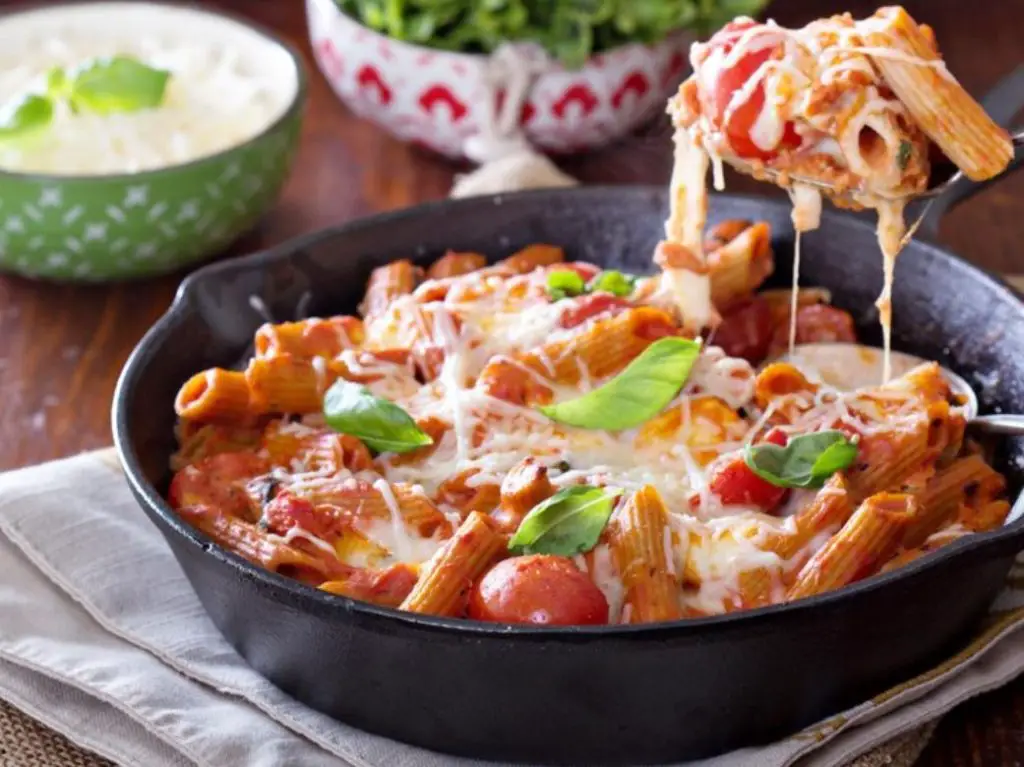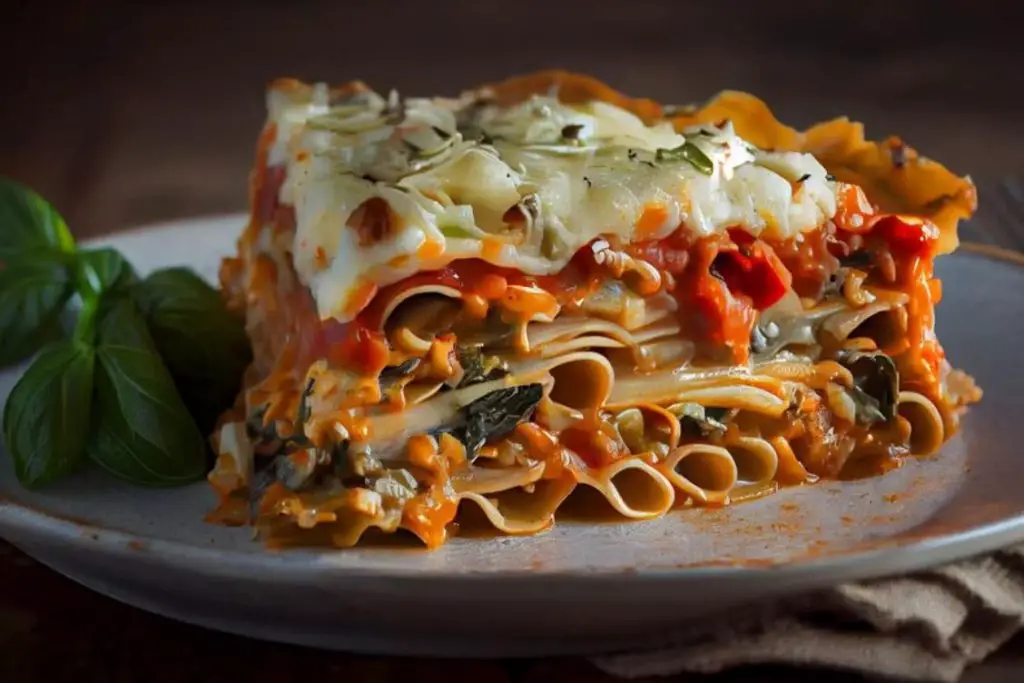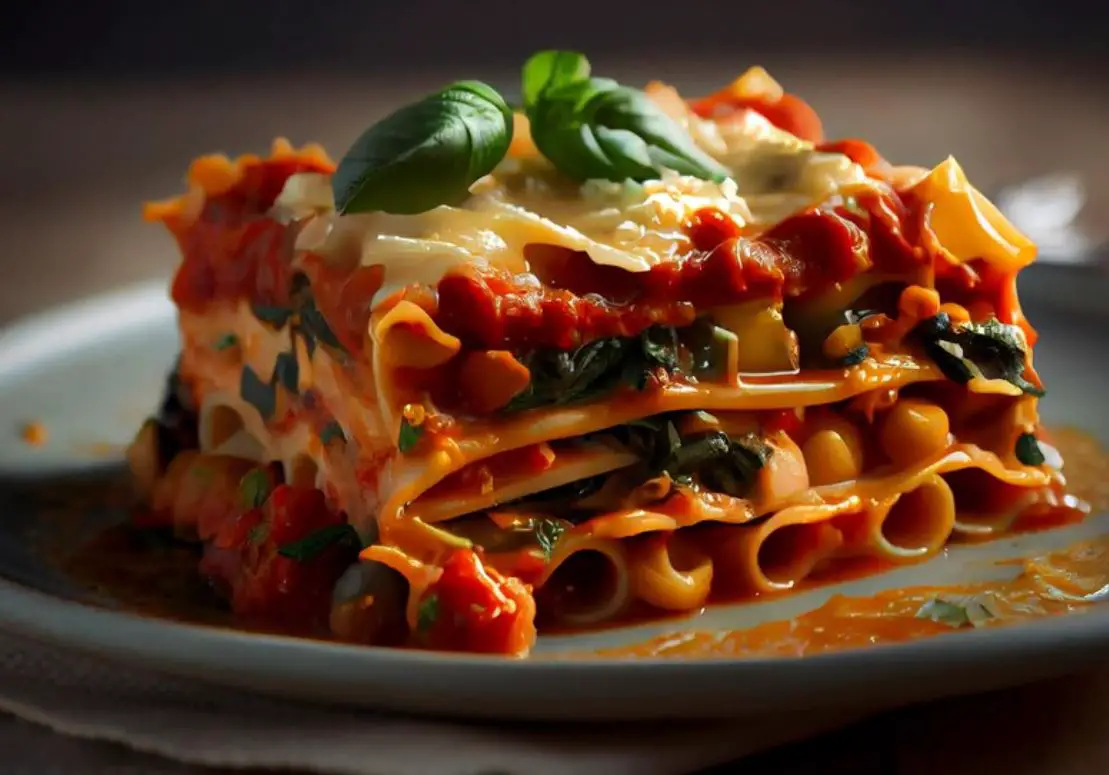Introduction to Taco Pasta
Taco Pasta, a delightful fusion dish, marries the bold flavors of Mexican cuisine with the comforting essence of Italian pasta. This culinary creation is a testament to the versatility and adaptability of global cuisines, blending spices and techniques from two rich culinary traditions.
The Fusion of Mexican and Italian Cuisines
The inception of Taco Pasta is a culinary adventure, a seamless blend of two distinct food cultures. It combines the spicy, vibrant flavors typical of Mexican tacos – like cumin, chili, and garlic – with the hearty, comforting presence of Italian pasta. This fusion respects the integrity of both cuisines while creating an entirely new and exciting taste experience.
The Rising Popularity of Taco Pasta
Taco Pasta has rapidly gained popularity, particularly among those who cherish innovative and eclectic dishes. Its appeal lies in its ability to balance the zest and kick of Mexican spices with the familiar, soothing textures of Italian pasta. This dish is not just a trend; it’s a new staple for dinners that require a touch of creativity and comfort.
Key Ingredients for Taco Pasta
Creating the perfect Taco Pasta requires a harmony of specific ingredients, each contributing to the dish’s unique flavor profile.
Essential Ingredients for Authentic Flavor
The soul of Taco Pasta lies in its seasoning. Traditional taco seasonings like cumin, chili powder, paprika, and garlic powder are crucial. These are complemented by fresh ingredients such as tomatoes, onions, and peppers, which add depth and freshness to the dish.
Choosing the Right Pasta and Meat
The choice of pasta is pivotal in Taco Pasta. Short, sturdy varieties like penne or rotini are ideal as they hold up well against the robust taco filling. For the meat, ground beef is a popular choice, offering a rich and hearty flavor. However, ground chicken or turkey can be used for a lighter version.
Vegetarian Alternatives
For a vegetarian twist, beans or lentils can replace meat, providing a similar texture and protein content. Grilled vegetables like zucchini or bell peppers also make excellent additions, ensuring the dish remains hearty and flavorful while catering to a vegetarian diet.
Step-by-Step Cooking Guide
Creating Taco Pasta is an enjoyable culinary journey, blending the preparation of ingredients with the art of cooking. Each step is crucial in achieving the perfect harmony of flavors and textures.
Preparing the Ingredients
Begin by gathering all your ingredients. For the meat, choose ground beef, chicken, or a vegetarian alternative. Dice onions, tomatoes, and bell peppers finely to ensure they meld seamlessly into the sauce. Measure out your spices – cumin, chili powder, paprika, and garlic powder – for easy access during cooking. Lastly, choose a robust pasta like penne or rotini, which can hold up well against the hearty sauce.
The Cooking Process: From Start to Finish
Start by cooking the pasta al dente according to package instructions; this ensures it retains a slight bite. In a separate pan, brown the meat, adding onions and garlic halfway through for depth of flavor. Once the meat is cooked, stir in the diced tomatoes, bell peppers, and taco seasonings, cooking until the vegetables are tender. Combine the cooked pasta with the meat sauce, allowing it to simmer briefly so the flavors meld. Adjust seasoning to taste.
Tips for Perfect Texture and Flavor
For the best texture, avoid overcooking the pasta; it should be just tender. To enhance the flavor, consider adding a splash of lime juice for acidity or a bit of cheese for creaminess. Fresh herbs like cilantro can add a bright finish. If the sauce seems too thick, a ladle of pasta water can help to adjust the consistency.
Nutritional Profile of Taco Pasta
Taco Pasta, while indulgent, can also be a part of a balanced diet, offering a range of nutritional benefits.
Health Benefits
This dish provides a good balance of carbohydrates, proteins, and fats, essential for a well-rounded diet. The inclusion of vegetables like tomatoes and bell peppers adds vitamins and antioxidants, while the choice of meat or vegetarian alternatives contributes protein. Using whole wheat pasta can increase the fiber content, beneficial for digestive health.
Caloric Content and Dietary Considerations
The caloric content of Taco Pasta can vary depending on the ingredients used. Ground beef will generally result in a higher calorie dish compared to ground turkey or vegetarian alternatives. For those monitoring their calorie intake, portion control is key. Additionally, for those with dietary restrictions, gluten-free pasta can be used, and dairy-free cheese can replace traditional cheese to cater to lactose intolerance or vegan diets.
Creative Variations of Taco Pasta
Taco Pasta’s adaptability allows for a plethora of creative variations, each offering a unique twist on this fusion dish.
Regional Twists and Unique Flavors
Around the globe, regional ingredients influence the character of Taco Pasta. In a Mediterranean version, olives and feta cheese might be added, while an Asian twist could include soy sauce and ginger for a completely different flavor profile. These regional adaptations not only add diversity but also cater to local palates, making Taco Pasta a global favorite.
Fusion Recipes for Adventurous Cooks
For those who love to experiment, Taco Pasta is a perfect canvas. Imagine a Thai-inspired version with coconut milk and curry spices, or a Cajun rendition featuring andouille sausage and Creole seasoning. These fusion recipes are ideal for adventurous cooks looking to explore new culinary landscapes.
Serving and Presentation Tips
The presentation of Taco Pasta can significantly enhance its appeal, turning a simple meal into a gourmet experience.
Plating and Garnishing Ideas
Serve Taco Pasta in a shallow bowl to showcase its vibrant colors and textures. Garnishing with fresh herbs like cilantro or parsley adds a pop of color and freshness. A sprinkle of cheese or a dollop of sour cream can add richness, while a wedge of lime on the side allows guests to add a zesty flair to their dish.
Accompaniments and Side Dishes
Taco Pasta pairs well with a variety of side dishes. A crisp green salad can balance the richness of the pasta, while garlic bread or cornbread can complement its hearty nature. For a lighter option, consider grilled vegetables or a bean salad.

Storing and Reheating
Proper storage and reheating are essential to maintain the quality and flavor of Taco Pasta.
Best Practices for Storage
Cool the Taco Pasta completely before storing it in the refrigerator. It’s best kept in an airtight container to retain its flavors and prevent it from drying out. If the pasta and sauce are stored separately, they can maintain their texture better.
Tips for Reheating Without Losing Flavor
To reheat, gently warm the Taco Pasta over medium heat, adding a splash of water or broth if the sauce has thickened. Stirring occasionally helps to heat the dish evenly. Avoid microwaving if possible, as this can cause the pasta to become overly soft and the sauce to lose its texture.
Dietary Adjustments for Taco Pasta
Taco Pasta’s versatility allows it to be adapted to various dietary needs, ensuring everyone can enjoy this flavorful dish.
Gluten-Free and Low-Carb Options
For those following a gluten-free diet, using gluten-free pasta made from rice, corn, or quinoa is an excellent alternative. Low-carb enthusiasts can opt for zucchini noodles or spaghetti squash as a pasta substitute, maintaining the dish’s essence while aligning with their dietary preferences.
Vegan and Vegetarian Versions
Vegetarian Taco Pasta can be rich in flavors and textures by incorporating beans, lentils, or tofu as protein substitutes for meat. For a vegan version, dairy products can be replaced with vegan cheese and plant-based cream, ensuring the dish remains creamy and satisfying without any animal products.
Taco Pasta for Special Occasions
Taco Pasta can be a festive and versatile dish for special occasions, easily adapted to cater to a crowd.
Party Recipes and Large Batch Cooking
For parties, Taco Pasta can be prepared in large quantities, making it a convenient and popular choice for feeding a crowd. It can be served buffet-style, allowing guests to customize their plates with various toppings like cheese, sour cream, and fresh herbs.
Holiday-Themed Variations
During the holidays, Taco Pasta can be adapted to fit the festive spirit. Adding ingredients like roasted red peppers or using themed pasta shapes can make the dish more special and fitting for holiday celebrations.
User Reviews and Testimonials
Gathering feedback from those who have tried Taco Pasta can provide valuable insights into the dish’s appeal and versatility.
Feedback from Home Cooks
Home cooks often praise Taco Pasta for its ease of preparation and adaptability to different tastes and dietary needs. Many appreciate how it can be a quick weeknight meal or a special dish for gatherings, with the ability to please both children and adults alike.
Professional Chefs’ Perspectives
Professional chefs might highlight the fusion aspect of Taco Pasta, appreciating its blend of flavors from different cuisines. They often suggest using high-quality ingredients and experimenting with spices and herbs to elevate the dish to a gourmet level.
Advanced Cooking Techniques
Taking Taco Pasta to the next level involves incorporating advanced cooking techniques and a keen sense of flavor pairing.
Elevating Taco Pasta to Gourmet Levels
To elevate Taco Pasta to a gourmet dish, focus on ingredient quality and cooking methods. Sautéing spices and aromatics like garlic and onion in high-quality olive oil before adding them to the meat enhances their flavors. Incorporating fresh herbs and homemade taco seasoning can make a significant difference. For an upscale twist, consider adding gourmet ingredients like sun-dried tomatoes, artisanal cheeses, or hand-made pasta.
Experimenting with Ingredients and Flavors
Advanced cooks can experiment with unique ingredients to add complexity to Taco Pasta. Consider incorporating unusual meats like duck or lamb for a richer flavor profile. Infusing the sauce with a splash of good quality wine or adding a hint of dark chocolate can introduce new depths of flavor. Playing with different cheese blends, such as smoked gouda or aged cheddar, can also add a sophisticated twist.
The Future of Taco Pasta
As culinary trends evolve, so too will the iterations and popularity of Taco Pasta.
Predictions for New Trends and Variations
The future of Taco Pasta may see it embracing more global flavors and dietary trends. Expect to see versions incorporating superfoods, exotic spices, or ingredients popular in other cuisines, like coconut milk or curry spices. As plant-based diets become more prevalent, innovative vegan versions using lab-grown meats or plant-based cheeses might emerge.
The Evolving Role in Fusion Cuisine
Taco Pasta is likely to maintain its role as a beloved fusion dish while continuing to evolve. It may become a template for further culinary experimentation, blending not just Mexican and Italian but other cuisines as well. As fusion cuisine becomes more mainstream, Taco Pasta could lead the way in demonstrating how traditional dishes can be reimagined in exciting, delicious ways.
Taco Pasta Recipe
Ingredients
- 1 lb ground beef (or turkey/chicken for a lighter option)
- 1 package taco seasoning
- 2 cups pasta (like penne, fusilli, or macaroni)
- 1 cup salsa
- 1 cup shredded cheese (cheddar or Mexican blend)
- 1 cup water or beef broth
- 1 small onion, chopped
- 2 cloves garlic, minced
- 1 bell pepper, chopped (optional)
- Salt and pepper to taste
- Olive oil
- Optional toppings: sour cream, chopped green onions, diced tomatoes, avocado, cilantro
Instructions
- Cook Pasta: In a large pot, cook the pasta according to package instructions until al dente. Drain and set aside.
- Brown the Meat: In a large skillet, heat a bit of olive oil over medium heat. Add the chopped onion and garlic, sautéing until fragrant. Add the ground beef and cook until browned. Drain excess fat.
- Add Taco Seasoning: Stir in the taco seasoning and water or broth. Bring to a simmer and let it cook for a few minutes until the mixture thickens slightly.
- Combine with Pasta: Add the cooked pasta to the skillet with the meat. Stir in the salsa and bell pepper. Cook for a few more minutes until everything is heated through.
- Add Cheese: Remove the skillet from heat. Stir in the shredded cheese until it’s melted and well combined.
- Serve: Serve the taco pasta hot with your choice of toppings like sour cream, green onions, diced tomatoes, avocado, or cilantro.
- Enjoy: Your taco pasta is ready to enjoy!

FAQs About Taco Pasta
here are some frequently asked questions about Taco Pasta along with their responses:
What is Taco Pasta?
Taco Pasta is essentially the insides of a taco mixed with noodles. It typically features beef, taco seasoning, cheese, and similar ingredients. Originally popularized as a Hamburger Helper flavor, it has evolved into various homemade versions.
What is the best pasta to use for Taco Pasta?
The best pasta for Taco Pasta are short varieties. This is not a dish for long noodles like spaghetti. Short noodles like macaroni, shells, penne, and similar types are excellent choices for this recipe.
How do you cook pasta al dente for Taco Pasta?
To cook pasta al dente, follow the package directions and start checking the pasta about two minutes before the recommended cooking time ends. The pasta should be tender enough to chew but still have a bit of bite.
How long can Taco Pasta be stored in the fridge?
Taco Pasta can be kept in the refrigerator for 3 to 4 days when stored in an air-tight container.
Can you freeze Taco Pasta?
Yes, Taco Pasta freezes well. Place it in an air-tight, freezer-safe container or heavy-duty freezer bag and it can be stored for up to 3 months.
What are some topping ideas for Taco Pasta?
Taco Pasta can be topped with anything you’d normally put on tacos. This includes cheese, sour cream, taco sauce, cilantro, avocado, salsa, and Pico de Gallo.
Conclusion
Taco Pasta is a versatile and flavorful dish that combines the best of Mexican and Italian cuisines. With its easy adaptability to different types of pasta, meats, and toppings, it’s a perfect meal for any occasion, whether a quick weeknight dinner or a special gathering. The ability to store and freeze it also makes Taco Pasta a convenient option for meal planning. This fusion dish is not only a crowd-pleaser but also a testament to the creativity and innovation in modern home cooking.


